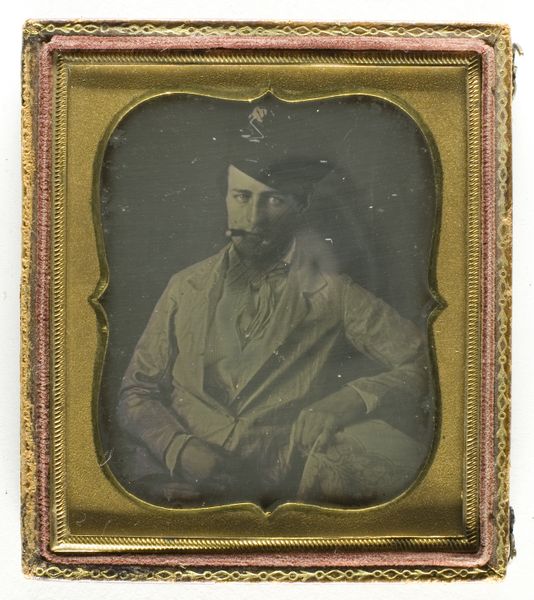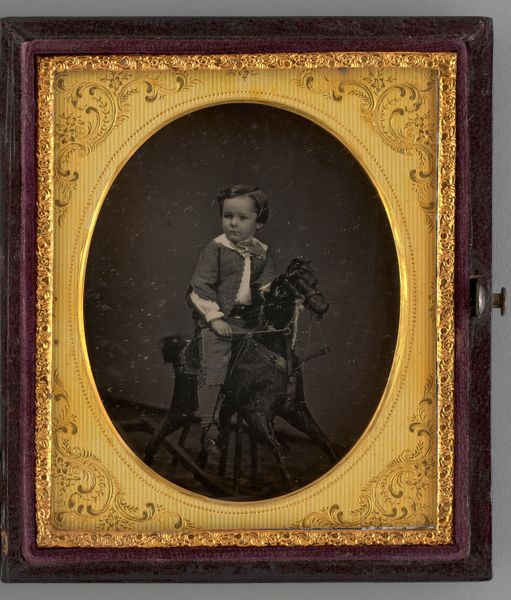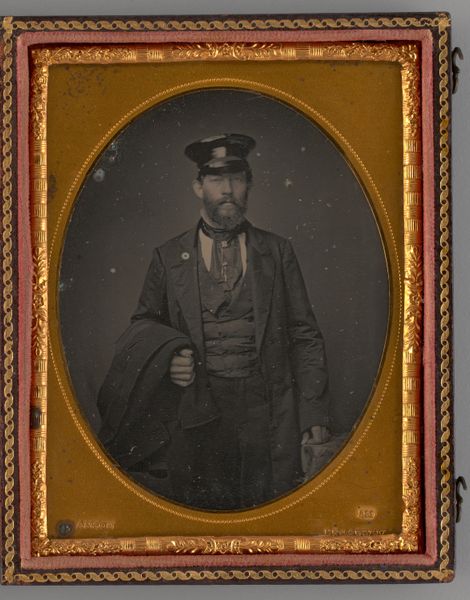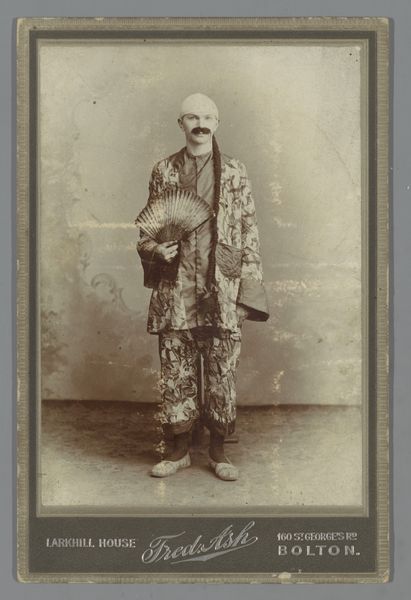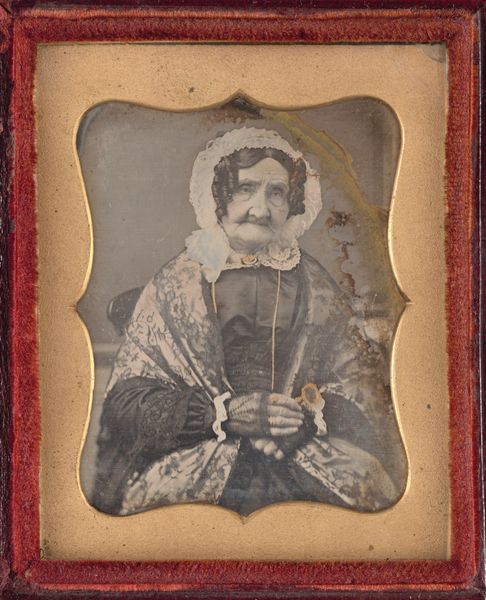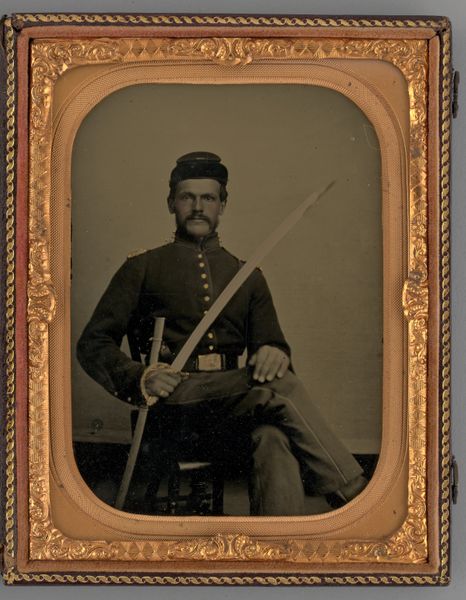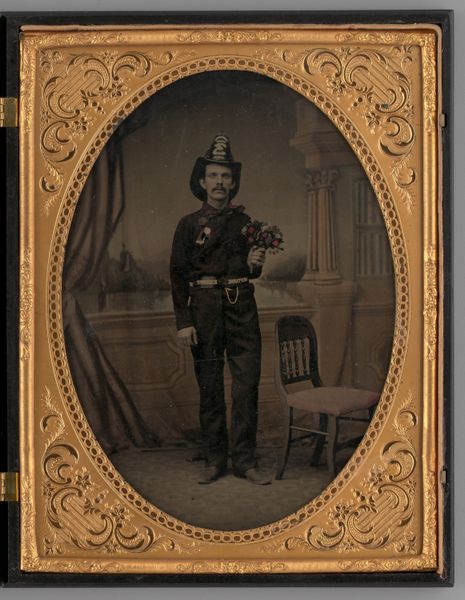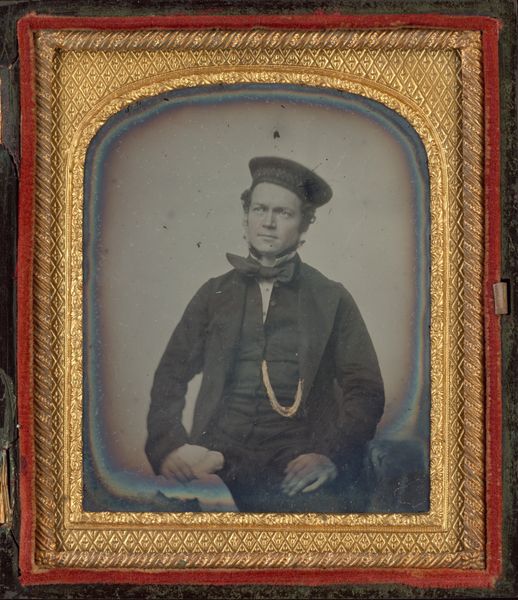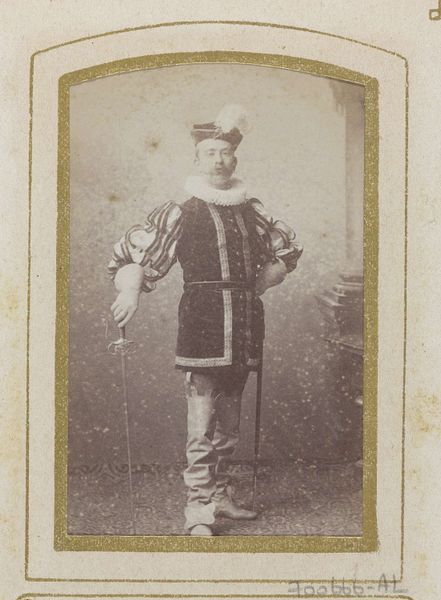
Untitled (Portrait of a Standing Circus Performer) 1855
0:00
0:00
daguerreotype, photography
#
portrait
#
16_19th-century
#
daguerreotype
#
photography
#
history-painting
#
realism
Dimensions: 10.1 × 7.6 cm (plate, appro×); 12 × 18.8 × 0.8 cm (open case); 11.9 × 9.6 × 1.8 cm (case); 8.4 × 6 cm (image, sight)
Copyright: Public Domain
Jesse Harrison Whitehurst created this portrait of a circus performer using the daguerreotype process, a very early form of photography. This image comes to us from a time of great social and technological change in America. There’s something both intimate and performative in this image. The circus performer, with his checkered trousers and cap, strikes a confident pose. The daguerreotype was a new medium, one that democratized portraiture, yet here it’s being used to capture someone who makes a living from performance. It raises questions about identity and representation. How much of the sitter's true self is revealed, and how much is a constructed persona? The rise of popular entertainment like the circus provided new roles and identities outside traditional social structures. This photograph offers a glimpse into the life of someone who occupies a unique place in society, one who lives outside the ordinary. What does it mean to capture an individual whose identity is built on spectacle and skill?
Comments
No comments
Be the first to comment and join the conversation on the ultimate creative platform.
